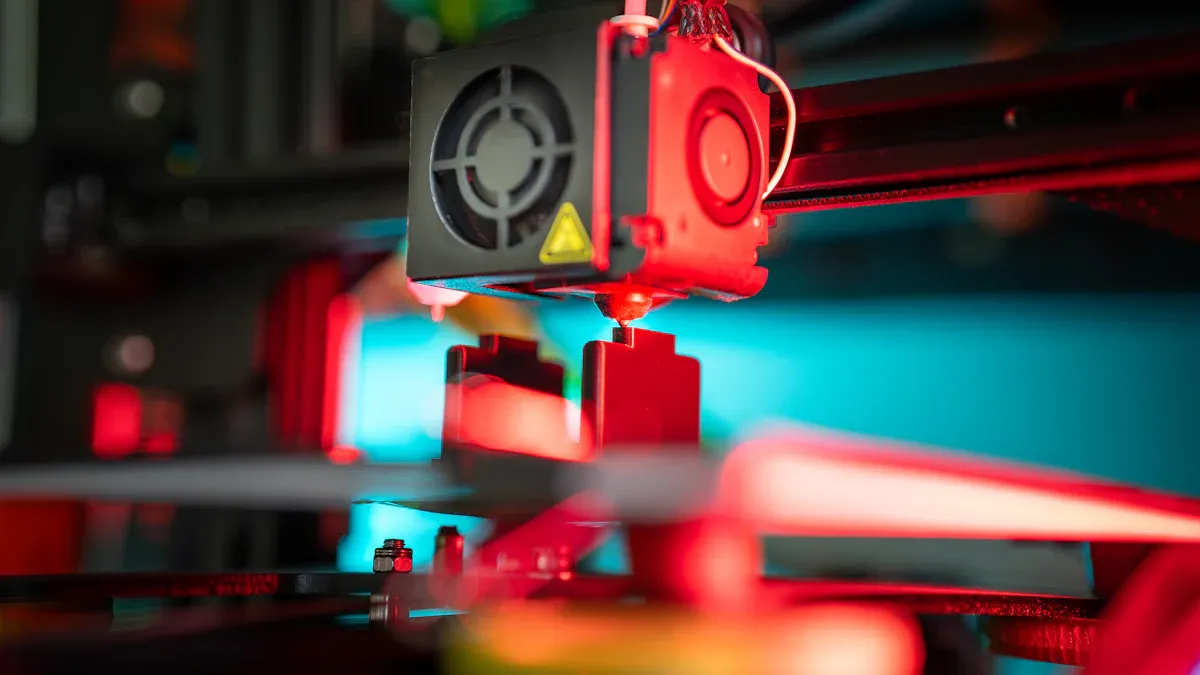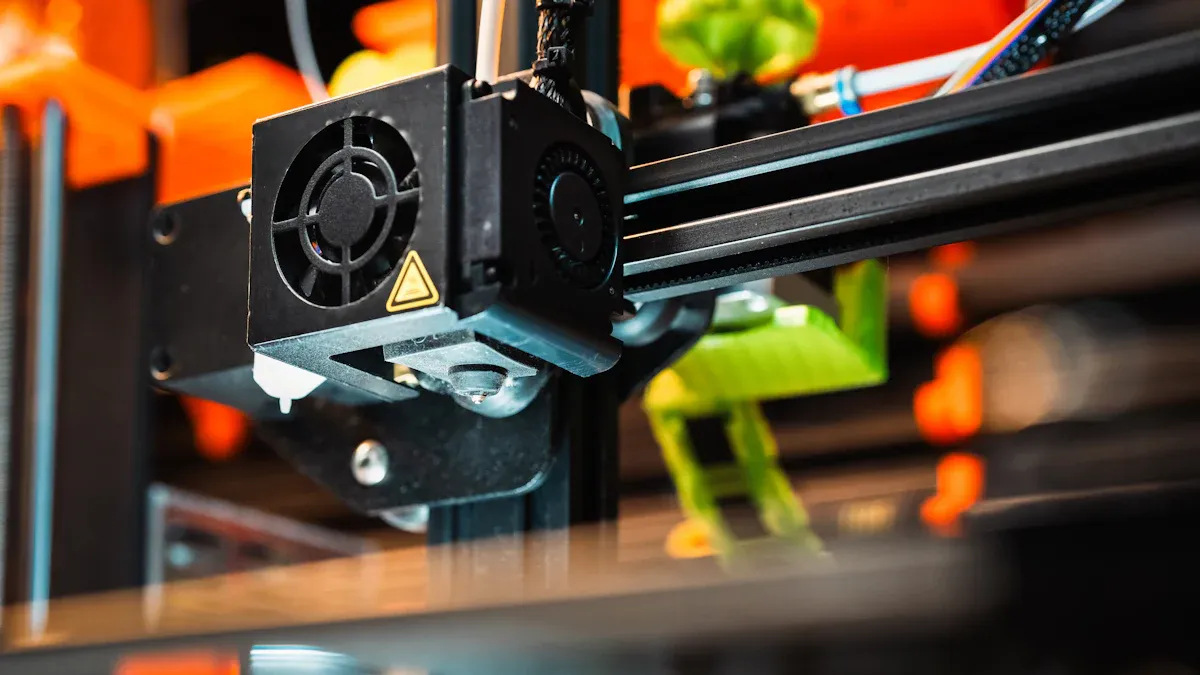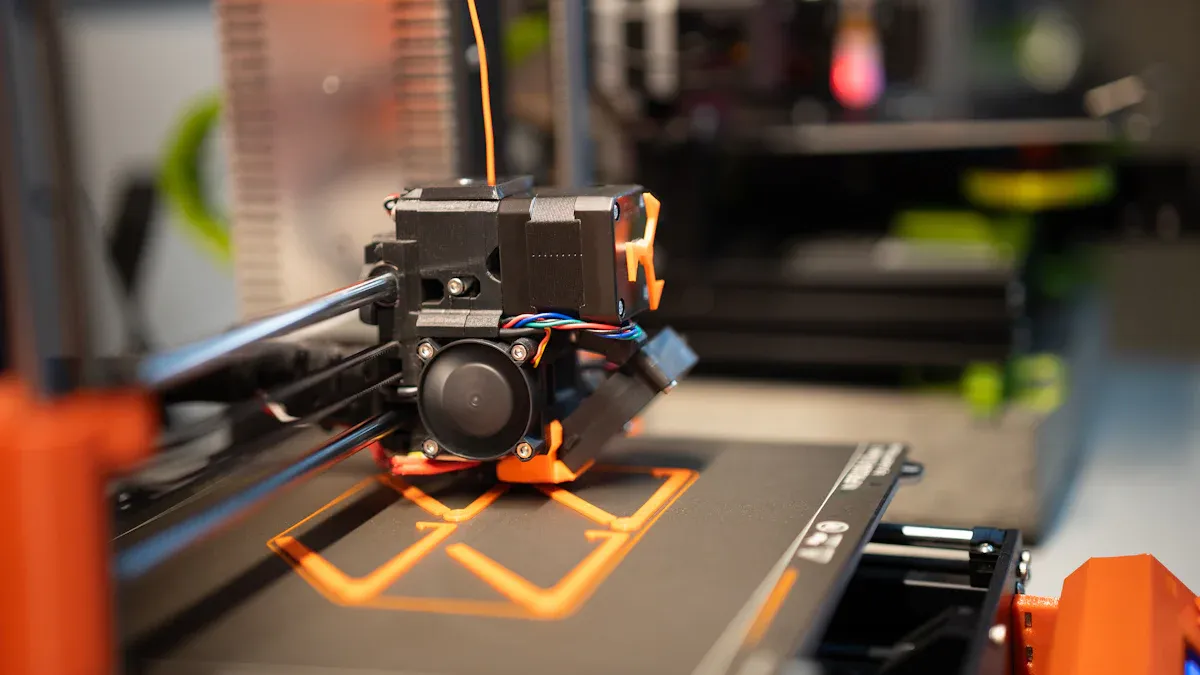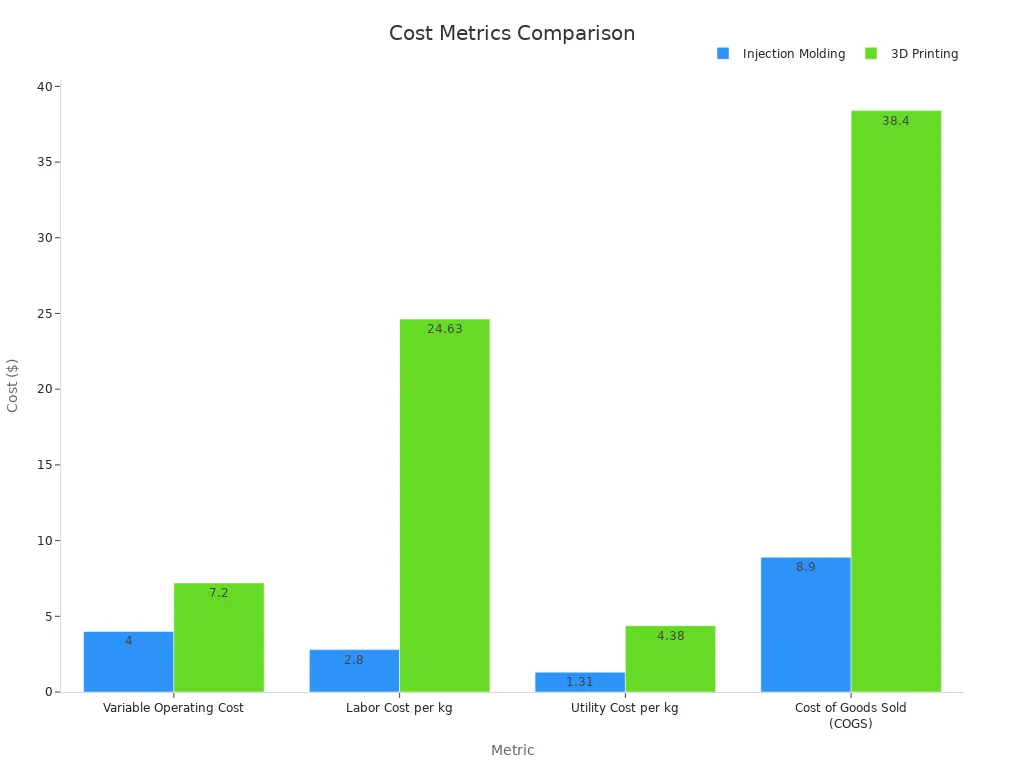
When it comes to prototyping, choosing between injection molding and 3D printing often boils down to your project's needs. Both methods have unique strengths, but their differences can greatly impact your timeline and budget. For instance, if you're working on a small batch of parts, 3D printing often costs 10% to 20% less than injection molding. However, for larger runs—over 8,000 units—costs drop to just $3 per part with injection molding. Speed also plays a role. 3D printing is ideal for quick iterations, while injection molding shines at scaling production. Your choice depends on balancing cost, speed, and material flexibility.

Injection molding is a manufacturing process designed for creating large volumes of identical parts. It starts with thermoplastic pellets, which are melted down and injected into a mold under high pressure. The mold, typically made from steel or aluminum, acts as a negative of the final part. Once the molten plastic fills the mold cavity, it cools and solidifies into the desired shape. Afterward, the part is ejected, and the process repeats.
Here’s a quick breakdown of the steps:
1. Material Selection: You choose the right thermoplastic based on the part’s requirements.
2. Machine Setup: The injection molding machine is prepared, including clamping the mold in place.
3. Injection: Molten plastic is injected into the mold cavity under pressure.
4. Cooling: The part cools and solidifies inside the mold.
5. Ejection: The finished part is removed, and any necessary finishing touches are applied.
This process is highly efficient, especially for large-scale production, because it minimizes material waste and ensures consistent quality.
Prototype injection molding offers several advantages when you’re developing prototypes or small production runs. First, it’s incredibly accurate, with tolerances as tight as +/- 25 microns. This precision ensures your prototypes closely match the final product. Second, it reduces scrap, saving you money on materials. Third, it speeds up the production process, allowing you to test and refine your designs faster.
Here’s a quick look at some key benefits:
| Benefit | Description |
|---|---|
| Cost-effectiveness | Helps identify design flaws early, saving money before full-scale production. |
| Time efficiency | Speeds up product development with quicker iterations. |
| Design validation | Allows thorough testing to improve the final product. |
| Material testing | Detects flaws early, reducing the risk of costly changes later. |
By using prototype injection molding, you can validate your designs, test materials, and ensure your product is ready for mass production.
While injection molding has many strengths, it’s not without its challenges. One major drawback is the cost of creating prototype molds. These molds require custom machining, which can be expensive and time-consuming. Additionally, prototype molds often have a limited lifespan, lasting only a few thousand cycles. This makes them less suitable for long-term use.
Another limitation is the complexity of certain designs. Some intricate geometries may exceed the capabilities of prototype materials, forcing you to compromise on design fidelity. Aggressive project timelines can also pose a challenge, as the manual processes involved in mold creation can lead to delays.
Here’s a summary of common limitations:
| Limitation Type | Description |
|---|---|
| Costs | High expenses due to custom machining and lack of economies of scale. |
| Material Limitations | Prototype materials may not withstand prolonged use, increasing costs for durable options. |
| Design Restrictions | Complex geometries may require trade-offs in speed, cost, or design accuracy. |
| Limited Lifespan | Prototype molds wear out quickly, requiring frequent replacements. |
| Aggressive Timelines | Manual processes can delay production, especially under tight deadlines. |
Despite these challenges, injection molding remains a powerful tool for prototyping when used strategically.
3D printing, also known as additive manufacturing, builds objects layer by layer from a digital model. Unlike traditional methods that cut or mold materials, 3D printing adds material only where needed. This process starts with a 3D design file, which guides the printer to create the object. You can think of it like stacking thin slices of material until the final shape appears.
There are several types of 3D printing technologies, each with unique strengths. For example:
- Stereolithography (SLA) uses light to harden liquid resin into solid layers.
- Fused Filament Fabrication (FFF) melts plastic filament and deposits it layer by layer.
- Selective Laser Sintering (SLS) uses lasers to fuse powdered material into solid parts.
These methods allow you to create complex designs that would be impossible with traditional manufacturing.
Additive manufacturing offers several benefits, especially for prototyping. First, it’s incredibly fast. You can produce prototypes in hours instead of weeks, which speeds up your design process. This rapid prototyping capability lets you test and refine your ideas quickly.
Another advantage is material efficiency. Unlike traditional methods that waste material, 3D printing uses only what’s necessary. This reduces costs and makes it an eco-friendly option. Plus, you can produce parts on demand, eliminating the need for large inventories.
Here’s a quick look at some key advantages:
| Advantage | Description |
|---|---|
| Reduced Waste | Generates less material waste compared to traditional methods. |
| Accelerated Product Development | Enables faster prototyping and design iterations. |
| On-Demand Manufacturing | Produces parts as needed, reducing inventory costs. |
With these benefits, additive manufacturing for prototyping is a game-changer for many industries.
While 3D printing has many strengths, it’s not perfect. One challenge is the limited range of materials. Although options are growing, they’re still fewer than those available for traditional methods. This can restrict your choices when creating prototypes.
Another issue is the surface finish. Many 3D-printed parts require post-processing to achieve a smooth appearance. This adds time and effort to the process. Additionally, the size of parts you can print is often limited by the printer’s build volume.
Here are some common challenges:
| Statistic | Description |
|---|---|
| 63% | Percentage of users deploying 3D printing for prototyping, showing its popularity despite limitations. |
| 21% | Percentage using 3D printing for items that can’t be made with other technologies. |
Despite these challenges, 3D printing remains a powerful tool for prototyping with additive manufacturing. It’s especially useful for creating complex designs and testing ideas quickly.

When it comes to cost, the choice between injection molding and 3D printing depends on how many parts you need. For small quantities, 3D printing is often the more affordable option. It doesn’t require expensive tooling, so you can start producing parts right away. For example, creating a nylon part using SLS 3D printing costs just over $200. However, as your production volume increases, injection molding becomes the clear winner. Although the initial tooling cost for injection molding can be around $10,000, the cost per part drops significantly once you produce more than 250 units. For high-volume orders, injection molding is the most cost-effective solution.
Here’s a quick breakdown of how costs compare:
- 3D Printing: Best for small batches or one-off prototypes. No upfront tooling costs.
- Injection Molding: Ideal for large-scale production. Higher initial costs but lower per-part costs for high-volume production.
If you’re working on a prototype or a small run, 3D printing saves you money. But for high-volume orders, injection molding offers unbeatable value.
Speed is another critical factor when choosing between these two methods. If you need parts quickly, 3D printing is hard to beat. You can go from a digital design to a finished part in just a few hours. This makes it perfect for rapid prototyping and quick design iterations. On the other hand, injection molding takes longer to set up. Creating the mold and preparing the machine can take weeks. However, once the setup is complete, the production speed of injection molding is unmatched. It can produce thousands of parts in a single day.
Here’s how the two compare in terms of speed:
- 3D Printing: Faster for small batches and prototypes. Ideal for quick turnarounds.
- Injection Molding: Slower to start but much faster for large-scale production.
If you’re in a rush to test a design, 3D printing is your best bet. But if you’re planning for high-volume production, the initial delay of injection molding pays off in the long run.
Both methods offer a wide range of materials, but their strengths differ. Injection molding works well with thermoplastics and is ideal for projects transitioning to high-volume production. It’s also cost-effective for large quantities. However, it requires softer metals for tooling, which can limit material options for the mold itself. On the other hand, 3D printing is a tool-free process, so you don’t have to worry about tooling materials. It’s perfect for small-batch production and complex designs. Plus, it offers a quick turnaround, making it a flexible choice for prototyping.
Here’s a quick comparison of material options:
- Injection Molding: Best for large-scale manufacturing. Works with a wide range of thermoplastics.
- 3D Printing: Offers flexibility for small batches and intricate designs. No tooling required.
If your project involves complex geometries or you need a cost-effective prototype injection mold, 3D printing gives you more freedom. But for high-volume production, injection molding provides the durability and consistency you need.
When it comes to design flexibility, both injection molding and 3D printing offer unique advantages. However, 3D printing stands out for its ability to handle custom designs and intricate geometries. You can create complex shapes, internal structures, and even moving parts without additional tools or molds. This makes it perfect for prototyping when you need to test bold ideas or experiment with product design flexibility. For example, if you're designing a part with intricate lattice structures, 3D printing can bring your vision to life without breaking the bank.
Injection molding, on the other hand, excels in producing consistent and precise parts. But it has limitations when dealing with highly complex designs. The mold used in injection molding must be carefully crafted, which can restrict your creativity. If your design includes undercuts or sharp angles, you might need to simplify it to fit the mold's capabilities. While this process works well for high-volume production, it’s less ideal for low-volume production or one-off prototypes.
Here’s a quick comparison:
- 3D Printing: Best for custom designs and intricate geometries. No need for tooling, so you can iterate quickly.
- Injection Molding: Great for simple, repeatable designs. Requires a mold, which limits flexibility but ensures consistency.
If your project demands mass customization or highly detailed prototypes, additive manufacturing like 3D printing is your go-to option. But for straightforward designs that need to scale, injection molding remains a reliable choice.
Scalability is a key factor when deciding between injection molding and 3D printing. If you're working on low-volume production, 3D printing is the clear winner. It allows you to produce small batches without the high setup costs associated with injection molding. You can also make design changes on the fly, which is perfect for prototyping or short-run manufacturing. For example, if you need 50 units of a custom part, 3D printing lets you get the job done quickly and affordably.
Injection molding, however, shines in high-volume production. Once the mold is ready, you can produce thousands of parts in a single day. The cost per unit drops significantly as production scales, making it the most cost-effective option for large orders. This efficiency is why injection molding dominates industries like automotive and consumer goods.
Here’s a detailed look at how both methods scale:
| Production Type | 3D Printing | Injection Molding |
|---|---|---|
| Low-Volume Production | Ideal for low-volume runs, flexible design changes | Inefficient due to high setup costs |
| High-Volume Production | Not ideal; high per-unit costs | Highly efficient, fast production cycles |
| Long-Term Cost Efficiency | Less cost-effective for mass production | Cost-effective in the long run due to economies of scale |
If you're planning for low-volume production or need to test multiple prototypes, 3D printing offers unmatched flexibility. But for high-volume production, injection molding provides the speed and cost efficiency you need to scale your operations.
Injection molding is your go-to option when you need production-ready prototype parts or high-volume manufacturing. If your project involves thousands—or even millions—of identical parts, this method delivers unmatched efficiency and consistency. Once the mold is created, you can produce parts quickly and at a low cost per unit. This makes it ideal for industries like automotive, consumer goods, and medical devices.
You should also consider injection molding if your design requires tight tolerances or strong mechanical properties. The process ensures high precision, making it perfect for parts that need to perform reliably under stress. For example, if you're prototyping applications that demand durability, injection molding provides the strength and consistency you need.
However, keep in mind that injection molding works best for simpler designs. Complex geometries may require additional tooling or design adjustments, which can increase costs and lead times. If your project involves straightforward shapes and high-volume production, injection molding is the clear winner.
Tip: Use injection molding when your prototype is ready for mass production or when you need consistent quality across large quantities.
3D printing shines in rapid prototyping and low-volume production. If you're working on a small batch of parts or need to test multiple iterations of a design, this method offers unmatched flexibility. You can create intricate geometries, internal structures, and even moving parts without worrying about tooling. This makes it ideal for prototyping applications where creativity and innovation are key.
You should also choose 3D printing when your project involves complex designs or requires quick turnarounds. For example, if you're developing a new product and need to test different versions, additive manufacturing lets you iterate quickly and affordably. Plus, it uses only the material needed, reducing waste and keeping costs low.
Here are some criteria to help you decide if 3D printing is right for your prototype:
- Understanding the differences between 3D printed and injection molded parts.
- Identifying parts where performance parameters are not critical.
- Adding margin in designs to accommodate the limitations of 3D printed parts.
- Utilizing inserts for wear and friction issues.
- Employing other prototyping methods, such as machining, when strength is a concern.
- Conducting thorough tolerance analyses instead of testing tolerances with prototypes.
Note: 3D printing is perfect for prototyping applications that require bold designs, quick iterations, or low production volumes.
Sometimes, the best solution is a hybrid approach that combines the strengths of injection molding and additive manufacturing. This strategy allows you to leverage the speed and flexibility of 3D printing for initial concept models while transitioning to injection molding for high-precision prototypes and large-scale production.
Here’s how combining these methods can benefit your project:
1. Hybrid Approach: Use 3D printing to create early-stage prototypes and validate your designs. Once you're confident in the concept, switch to injection molding for production-ready prototype parts.
2. Faster Development Cycles: Speed up product development by producing initial models with 3D printing and high-quality prototypes with injection molding.
3. Cost Management: Save on initial mold investment by using 3D printing for early iterations while ensuring your prototypes meet performance standards with injection molding.
This combination is especially useful for projects with tight deadlines or limited budgets. By using 3D printing for rapid prototyping and injection molding for final production, you can optimize both time and cost without compromising quality.
Tip: A hybrid approach is ideal for projects that require both design flexibility and scalability. It lets you test ideas quickly while preparing for mass production.
Prototype injection molding has seen remarkable advancements, making it more efficient and sustainable. One of the most exciting trends is the use of bio-based materials. These materials, derived from renewable resources, help you meet sustainability goals while maintaining durability. For example, companies are now using engineered thermoplastics and composites to create stronger, longer-lasting prototypes.
Automation is another game-changer. With Industry 4.0, smart factories equipped with IoT devices and advanced sensors allow real-time monitoring of the injection molding process. This means you can detect and fix issues before they become costly problems. AI and machine learning also play a big role. They optimize processes and predict defects, ensuring higher-quality prototypes.
Energy efficiency is improving too. Modern machines with servo motors and hybrid systems consume less energy, reducing both costs and carbon footprints. Innovations like waterless cooling systems further enhance sustainability by minimizing water usage.
Additive manufacturing, or 3D printing, continues to revolutionize prototyping. One major advancement is the growing range of materials available. You can now create prototypes that meet specific functional and aesthetic needs, whether you’re working with metals, plastics, or even bio-compatible materials.
This technology also excels in reducing waste. Unlike traditional methods, 3D printing uses only the material needed, which lowers costs and supports eco-friendly practices. Rapid prototyping has become even faster, allowing you to test and refine designs in record time. For instance, companies can now iterate on designs within hours, speeding up product development cycles.
Structural integrity has also improved. Advanced techniques optimize material usage, resulting in prototypes that are not only functional but also reliable. These innovations make additive manufacturing a powerful tool for industries like healthcare, automotive, and aerospace.
Combining injection molding and 3D printing offers the best of both worlds. This hybrid approach lets you use 3D printing for initial prototypes and injection molding for mass production. For example, in the automotive industry, you can 3D print prototype parts for testing and then switch to injection molding for large-scale manufacturing.
This integration is also transforming the medical field. Custom medical devices, such as prosthetics, can be designed with 3D printing and then produced at scale using injection molding. Similarly, consumer electronics benefit from this approach. You can validate designs with 3D printing and ensure durability with injection molding.
By bridging these technologies, you can achieve faster development cycles, lower costs, and higher-quality products. It’s an innovative way to stay competitive in today’s fast-paced manufacturing landscape.
Choosing between injection molding and 3D printing for prototyping depends on your project’s goals. Injection molding excels in high-volume production with lower per-unit costs, while 3D printing offers unmatched flexibility for intricate designs and rapid iterations. For example, the cost of goods sold (COGS) for injection molding is $8.9 per kg compared to $38.4 per kg for 3D printing, making it the economical choice for large-scale manufacturing.
To select the right method, consider tools like wireframes or mockups to test your ideas. Platforms such as Figma or Adobe XD can help you visualize designs and refine them before production. Staying updated on advancements is also crucial. Agile prototyping has reduced time-to-market from 12-18 months to just 6-9 months, proving the value of adopting new technologies.
By combining both methods, you can leverage 3D printing for early-stage prototypes and injection molding for scalable production. This hybrid approach ensures efficiency, cost savings, and high-quality results.

Tip: Stay informed about emerging trends to keep your prototyping process competitive and innovative.
If you're working on small batches, 3D printing is your best bet. It’s faster, cheaper, and doesn’t require expensive molds. You can test designs quickly and make changes without worrying about setup costs. Injection molding is better for larger runs.
Absolutely! You can use 3D printing for early prototypes and injection molding for production-ready parts. This hybrid approach saves time and money while ensuring high-quality results. It’s perfect for projects that need flexibility and scalability.
You’ve got plenty of options! Common materials include plastics like PLA and ABS, metals like stainless steel, and even resins. Each material has unique properties, so choose one based on your prototype’s needs—strength, flexibility, or aesthetics.
Yes, if you’re planning high-volume production. The initial mold cost might seem high, but the per-unit cost drops significantly as production scales. For thousands of parts, injection molding is the most cost-effective option.
Think about your project’s goals. Need quick iterations or intricate designs? Go with 3D printing. Looking for consistent quality and low costs for large runs? Injection molding is the way to go. Sometimes, combining both works best!